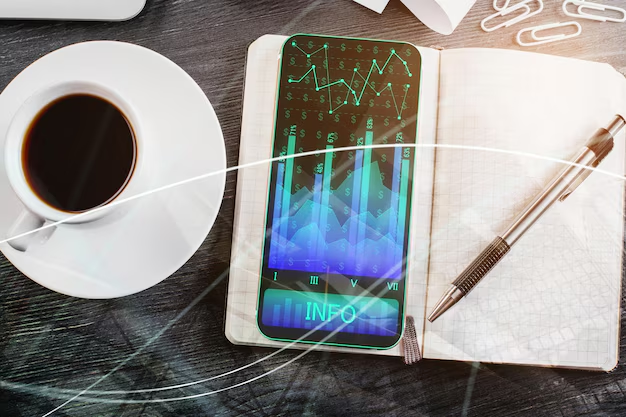Exploring Apple's Dividend: What You Need to Know in 2023
When considering investing in technology giants, Apple often tops the list of popular choices due to its innovative products and iconic brand. But beyond its gadgets and services, potential investors frequently ask: "Does Apple Pay a Dividend?". This question is crucial for investors seeking income through dividends as part of their investment strategy. In this comprehensive guide, we'll delve into Apple's dividend policy, provide historical context, and discuss relevant considerations for investors.
Understanding Dividends and Their Importance
What Are Dividends?
At their core, dividends are payments made by a corporation to its shareholders, often derived from profits. These payments can be issued as cash, shares of stock, or other property. For shareholders, consistent dividends can provide a reliable income stream that supplements capital gains.
Why Do Companies Pay Dividends?
The decision to pay dividends reflects a company's assessment of its current and future profitability, and it's an attractive feature for investors who prioritize income stability over high-risk, high-reward investments. Companies with a strong commitment to dividend payouts often signal financial health and resilient business operations.
Apple's Dividend Policy
Does Apple Currently Pay a Dividend?
Yes, Apple currently pays a dividend. The company reinstated its dividend policy in 2012 after a 17-year hiatus. Since then, it has consistently paid quarterly dividends to its shareholders. For an investor eyeing stable income in addition to portfolio growth, Apple's dividend payments exemplify the company’s financial strength and commitment to returning value to its shareholders.
How Has Apple's Dividend Policy Evolved?
The history of Apple's dividend policy is as noteworthy as its product line:
- 1987-1995: Apple initially paid dividends but suspended them due to shifting financial priorities and challenges.
- 2012 - Present: Apple reintroduced dividends, with a commitment to regular adjustments aligned with its financial outlook. This move was welcomed by long-term investors seeking a balance of income and growth.
How Are Apple's Dividends Determined?
Apple’s dividend decisions are influenced by several key factors:
- Profitability: With strong earnings reports, the company can comfortably support dividend payments.
- Cash Flow: Apple's robust cash flow allows for reinvestment in its business and compensation to its shareholders through dividends.
- Strategic Goals: The tech giant balances paying dividends with strategic investments in innovation and market expansion.
Analyzing Apple's Dividend Yield
What Is Dividend Yield and Why Does It Matter?
Dividend yield is a financial ratio that indicates how much a company pays out in dividends each year relative to its stock price. It's a useful metric for evaluating the income potential of an investment compared to its stock value.
- Formula: Dividend Yield = (Annual Dividends per Share / Price per Share) × 100%
Investors often seek companies with a higher yield for more significant income from their investment.
How Does Apple's Dividend Yield Compare?
Compared to other tech giants or traditional dividend-paying sectors like utilities or consumer staples, Apple's dividend yield might seem modest. However, it's important to consider both the growth potential and stability Apple offers as a blue-chip stock.
Reasons to Consider Investing in Dividend Stocks
Stability and Predictability
Traditional dividend-paying stocks are often less volatile compared to their non-dividend counterparts, as the regular income from dividends provides a cushion against market fluctuations.
Income Generation
For investors seeking regular income, dividend stocks like Apple can serve as an effective vehicle to achieve financial goals such as retirement planning or wealth accumulation.
Long-Term Growth Potential
Reinvested dividends can lead to compounding growth. This means that the longer you hold dividend stocks, the more potential for expanded capital gains.
Evaluating Apple's Overall Financial Health
Core Financial Indicators
- Revenue Growth: Consistent increases in revenue underscore Apple's market strength.
- Cash Reserves: A vast cash reserve allows flexibility in sustaining dividend payments and funding the company’s strategic initiatives.
- Debt Levels: While Apple does utilize debt, maintaining manageable levels is key to funding both dividends and expansion without compromising financial health.
Market Position and Innovation
Apple's innovative culture helps to drive its market position, with passionate consumer loyalty and a robust product ecosystem. This underpins the company's resilience and confidence in maintaining a dividend payout amidst competitive pressures.
Strategic Considerations for Potential Investors
Assessing Income Needs
When considering dividend stocks, particularly Apple, reflect on your income needs:
- Are you seeking immediate income supplement?
- Is your investment preference focused on long-term growth with reinvested dividends?
Balancing Risk and Reward
Evaluate your risk tolerance. While Apple is a stable, established company, it's crucial to balance tech exposure with other assets to mitigate sector-specific volatility.
Diversification
Ensure diversified investments. While Apple is a robust contributor to any portfolio, a variety of dividend and growth stocks can spread risk and optimize returns.
Key Takeaways for Investors
Investing in a company like Apple involves understanding more than just its dividend. It requires balancing potential income with growth capabilities and understanding the broader tech market dynamics. Here are the highlights when considering investment with Apple:
- ✅ Steady Income: Apple offers quarterly dividend payments, enhancing income stability.
- 📈 Growth Potential: Apple's innovative edge fosters potential for capital appreciation alongside dividends.
- 🛡️ Resilience: Strong financial health and market position imply reliable continued dividend distributions.
- 🤝 Balance in Portfolio: As part of a diversified investment strategy, Apple can enhance both stability and growth.
Final Insights
When determining if Apple is the right choice for your dividend portfolio, weigh both its financial stability and growth potential. The company’s commitment to returning value to shareholders through dividends complements its legacy of innovation, offering a unique mix of predictability and upside opportunity. Always align investment choices with your financial goals and risk tolerance, and consider consulting with a financial professional for tailored advice. By doing so, investors can harness the blend of stable income and growth that Apple provides, contributing to a robust portfolio strategy in today's market landscape.
